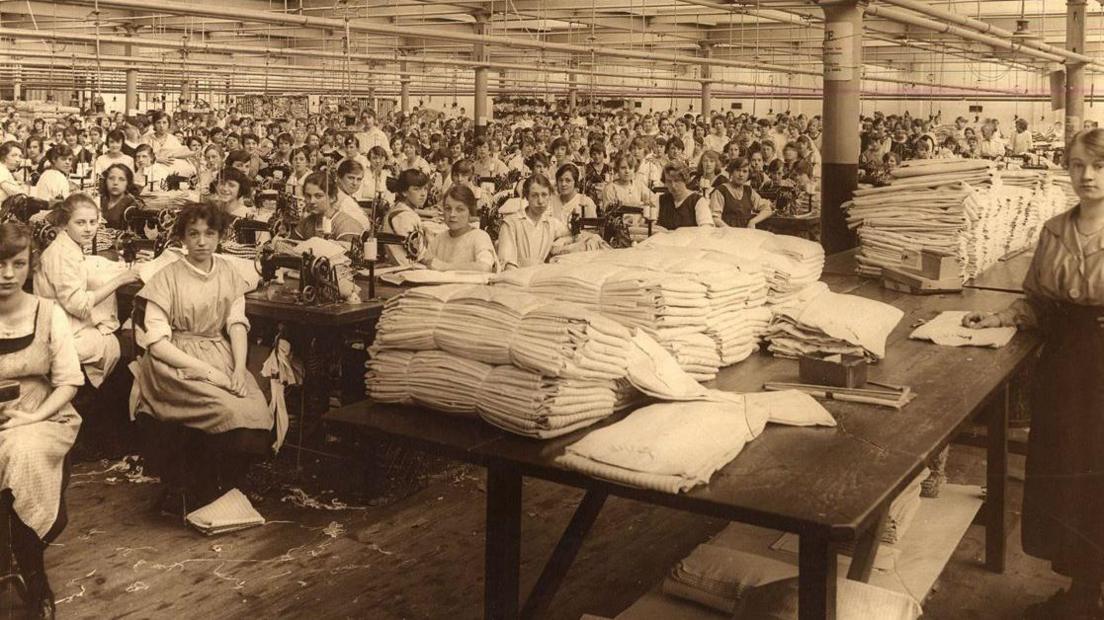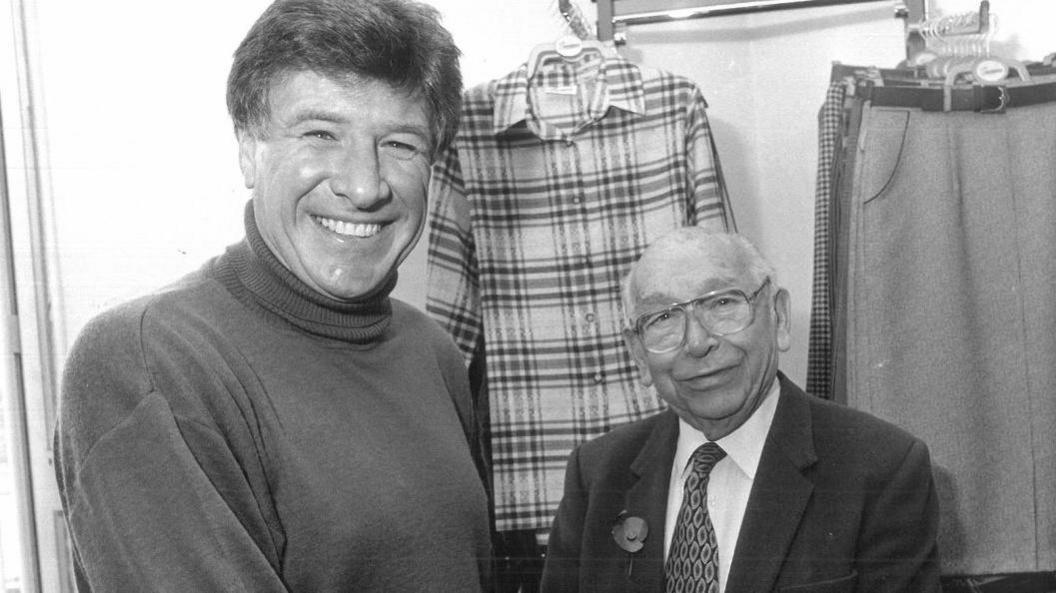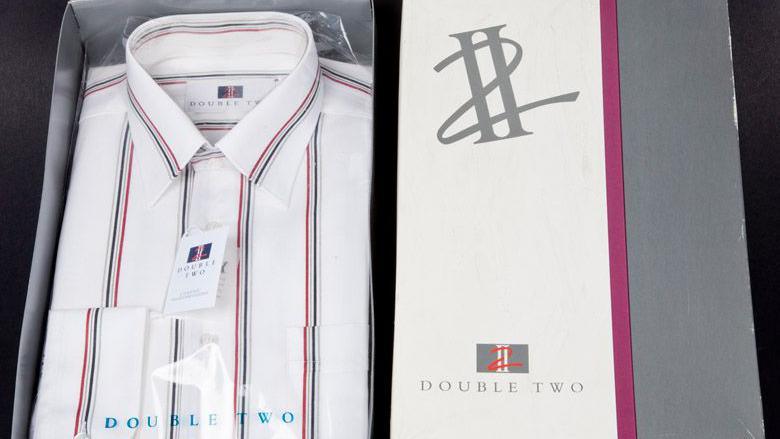Shirt makers urged to share stories for exhibition

The company had its own bus service which would collect workers, many of them the wives and daughters of miners who lived in villages across the district
- Published
Stories from former workers at a shirt maker in Wakefield are wanted for an exhibition on how the company changed men's fashion.
Clothing firm Double Two was established by Isaak Donner and Frank Myer who both fled war-torn Europe in 1940 to set up shop in the city.
The business, which still operates, became known worldwide for its attachable spare collars, the first man-made fibre garment and the first non-iron shirt.
Wakefield Museum curator John Whitaker said staff hoped to collect memories from workers at the firm, which at its peak employed 1,500 in the city and a further 600 around Britain.

Former Liverpool and England footballer Emlyn Hughes pictured with one of the company's founders, Isaak Donner

Wakefield Museum said former workers had already come forward and shared their stories
Mr Whitaker said such was the size of the workforce, the company had its own bus service which would collect workers, many of them the wives and daughters of miners who lived in villages across the district.
He said: “We are hoping that this is going to attract loads of worker stories that we can collect.
“It’s been great so far. We have had so much feedback.
"A lot of people who used to work there have come to see it and we are having a special celebration night for them.
“We want to send the message out far and wide and get lots of people who worked there to be involved and give us all those memories."
The business started out in a small fourth-floor corner room in a building in Kirkgate in the city centre.
By 1946, it had taken over the entire building, transforming it into a vast shirt manufacturing facility that became a key player in the men's shirt market.
Having found the majority of men returning from World War Two had become accustomed to wearing loose-collar shirts rather than a stiff collar, Mr Donner introduced a patent that his family had developed prior to the war.
The Double Two shirt took its name from its unique selling point - each shirt came with replaceable collars and cuffs to extend the life of the garment.

Double Two worked with the inventor of polyester fibre, Dr Rex Winfield, to create the first ever man-made shirt

The Double Two shirt came with replaceable collars and cuffs
The company also pioneered work with man-made fibres and the exhibition features the world's first synthetic shirt, created in Wakefield in 1950.
The display also charts the company's fortunes as menswear trends changed throughout the 20th Century.
It follows the evolution of materials and designs through an array of shirts in different colours and bold patterns.
The event is part of Our Year, a year-long programme of activities to celebrate the district’s heritage.
Follow BBC Yorkshire on Facebook, external, X (formerly known as Twitter), external and Instagram, external. Send your story ideas to yorkslincs.news@bbc.co.uk, external